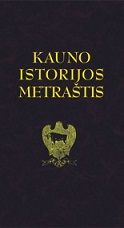Kauno miesto planavimas XX a. 3–4 dešimtmečiais: tarp siekių ir tikrovės
The Planing of Kaunas during the Second and the Third Decades of the 20th Century : Ambitions and Reality
Author(s): Mindaugas BalkusSubject(s): History
Published by: Vytauto Didžiojo Universitetas
Keywords: urbanistinė plėtra; miestų planavimas; gatvių tinklas; teritorinė plėtra; miestų planai;
Summary/Abstract: The article aims to analyse the relation between the Kaunas city planning and its actual development during the second and the third decades of the 20th century. In 1919, the suburbs of Žemieji Šančiai, a part of Žaliakalnis, Vilijampolė, and Aleksotas, and in 1931 – the rest of Žaliakalnis, Vilijampolė, Aleksotas, a part of Marvelė, Aukštieji Šančiai and Aukštoji Panemunė were incorporated into Kaunas. In the beginning of the second decade, as a result of the land reform and the parcelling of the estate and Kaunas fortress lands, new quarters and streets were formed. However, the streets were not adjusted to the street network of the city, and the quarters did not have a clear and functional structure. Since 1922, rapid works were chaotically conducted, without the necessary control or projects of street planning. In 1923, Frandsen and Joachim prepared the development plan of Kaunas, which required a radical reorganization of the city structure and was only partially realized (in the Petrausko, Vydūno, and Radvilėnų streets). On the basis of the project, in 1924-1928, separate development plans were prepared for Žaliakalnis, Aleksotas, and Vilijampolė. Also, layout plans were developed for Žemieji Šančiai in 1929, Aukštoji Panemunė in 1933, and Aukštieji Šančiai in 1940. In 1937, a regulatory Kaunas city plan was prepared, which aimed to correct the street network and establish functional zones (trade, housing, etc.). The methodological formation of the city territory in the First Republic of Lithuania was hampered by the lack of the necessary legislation and the absence of control of plot parcelling and construction. During the discussed period of time, the urban development of Kaunas was especially rapid, the peripheral areas had intensive constructions, whereas the city centre had a number of undeveloped territories. The development of Kaunas city during the discussed period of time was only partially planned, especially in the second decade.
Journal: Kauno istorijos metraštis
- Issue Year: 2013
- Issue No: 13
- Page Range: 205-220
- Page Count: 16
- Language: Lithuanian

